#yugoslavia '67
Text
youtube
Vse Roze Sveta, Lado Leskovar | Yugoslavia, Eurovision Song Contest Grand Prix de la Chanson 1967
8th place with 7 points
2 notes
·
View notes
Photo

Dear friends , We are happy to announce that ”Socialist Modernism in Former Yugoslavia”, the photo album/digital guide in 2nd release of @_BA_CU ‘s planned series, is available in 800 copies. Those who are interested in #SocialistModernism are able to order the book on 👉🏻 @UrbanicaGroup @ushopamazon 👈🏻 distributor page, (Link in our profile) ; link: http://urbanicagroup.ro/ushop/ or AMAZON: https://www.amazon.com/s?me=A33QJE9SPOCVM4&marketplaceID=ATVPDKIKX0DER by selecting the Photo album from among the books listed. (Shipping worldwide with DHL) #SocialistModernism #_BA_CU The photo album includes landmarks of socialist modernist architecture in Former Yugoslavia – from the 1950s to 1980s. The preface by prof. Sandra Uskokovic, B.A.C.U. Association explains socialist modernist tendencies, it presents – in color photographs – a functional image of the buildings and their often original elements that synthesize local culture and traditions, while bringing you up to date with their current state of conservation. At the beginning of the book, a map shows the location of each of the buildings described. The 67 landmarks included in this volume have been organized by function, into six sections. The book contains the authors’ view on Former Yugoslav modernist architecture. Print run 800 Pages 192 +1 Spread/ YUGO-SOC MOD Map Croatian, Serbian and English Size 26×28.5 cm Weight 1.25 kg Designed and published by @_BA_CU Association 1: Eastern Gate of Belgrade, Rudo Buildings, (Istočne Kapije) Belgrade, Serbia, 1976, Architect: Vera Ćirković 2.3 5pic: Lamela Bildings - Novobeogradski blokovi / Block 61-64 Belgrade, Serbia,1970s, Urban design Josip Svoboda, Architect Milan Miodragovic - 7 pic: Avala Tower Belgrade, Originally constructed in 1965, rebuilt 2006-2009.. 10 pic: "Genex Tower" Belgrade, Serbia,1977, Architect Mihajlo Mitrović 9 pic “Laza Kostic" primary school, New Belgrade, Serbia. 1974, Architects: Bozidar Jankovic, Branislav Karacic and Aleksandar Stjepanovic https://www.instagram.com/p/Cr0_ctJs58Z/?igshid=NGJjMDIxMWI=
68 notes
·
View notes
Photo
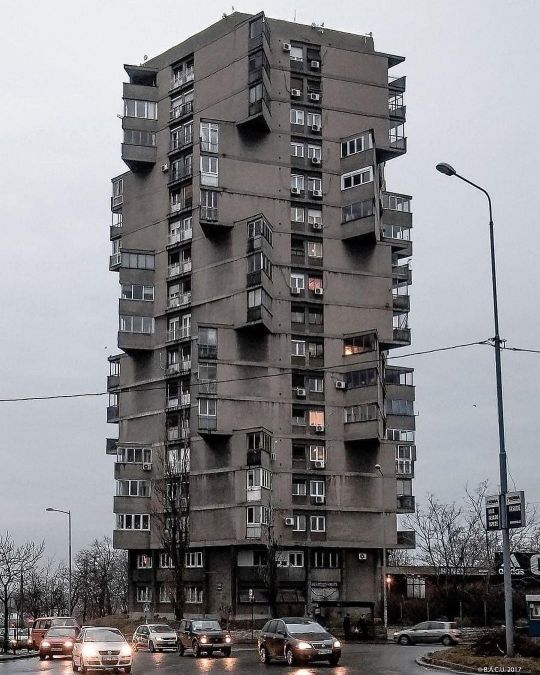
Dear friends , We are happy to announce that ”Socialist Modernism in Former Yugoslavia”, the third photo album/digital guide of @_BA_CU ‘s planned series, is available in 800 copies. Those who are interested in #SocialistModernism are able to order the book on👉🏻 @UrbanicaGroup @ushopamazon distributor page, (Link in our profile👆🏻) ; link: http://urbanicagroup.ro/ushop/ or AMAZON: https://www.amazon.com/s?me=A33QJE9SPOCVM4&marketplaceID=ATVPDKIKX0DER by selecting the Photo album from among the books listed. (Shipping worldwide with DHL) #SocialistModernism #_BA_CU The photo album includes landmarks of socialist modernist architecture in Former Yugoslavia – from the 1950s to 1980s. The preface by prof. Sandra Uskokovic, B.A.C.U. Association explains socialist modernist tendencies, it presents – in color photographs – a functional image of the buildings and their often original elements that synthesize local culture and traditions, while bringing you up to date with their current state of conservation. At the beginning of the book, a map shows the location of each of the buildings described. The 67 landmarks included in this volume have been organized by function, into six sections. The book contains the authors’ view on Former Yugoslav modernist architecture. Print run 800 Pages 192 +1 Spread/ YUGO-SOC MOD Map Croatian, Serbian and English Size 26×28.5 cm Weight 1.25 kg Designed and published by @_BA_CU Association 1 pic Karaburma Housing Tower Building. Belgrade, Serbia Built in: 1963 Architect: Rista Šekerinski. 2pic Western Gates of Belgrade, Belgrade, Serbia, built in 1977, Architect Mihajlo Mitrović. 3pic Development on Dubrovačka 22, Belgrade, Serbia Built in the 1970s Architect: Predrag Ristić 5pic : Eastern Gate of Belgrade, Rudo Buildings, (Istočne Kapije) Belgrade, Serbia, built in 1976, 7pic: Avala Tower (Telecommunication and observation) Belgrade, Serbia 9pic: Hotel Zlatibor, Užice, Serbia Built in 1981 Architect Svetlana Kana Radević 10 pic: One of three apartment buildings in Vojvode Stepe bd. Belgrade, Serbia built in 1973 https://www.instagram.com/p/Cph43ePsBtg/?igshid=NGJjMDIxMWI=
53 notes
·
View notes
Text
Eurovision Fact #67:

Bosnia and Herzegovina has participated in the Eurovision Song Contest since 1993, prior to this, the nation took part in the contest under Yugoslavia.
The nation participated a total of 19 times. They took part in: 1993-1997, 1999, 2001-2012, and 2016.
Since the introduction of the semi-finals, Bosnia and Herzegovina has qualified for the final a total of 9 times, missing only the 2016 contest.
They placed in top ten 6 times: 1999, 2004, 2006, 2008, 2009, and 2011. Out of those six times in the top, the nation was in the top five only once: 2006. That year, Bosnia and Herzegovina placed third with Hari Mata Hari's Song "Lejla."
[Sources]:
Bosnia and Herzegovina, Eurovision.tv.
Athens 2006 Participants: Hari Mata Hari, Eurovision.tv.
#esc#eurovision#eurovision song contest#eurovision facts oc#esc facts oc#esc 2006#bosnia and herzegovina#hari mata hari
2 notes
·
View notes
Text
Events 4.6 (after 1940)
1941 – World War II: Nazi Germany launches Operation 25 (the invasion of Kingdom of Yugoslavia) and Operation Marita (the invasion of Greece).
1945 – World War II: Sarajevo is liberated from German and Croatian forces by the Yugoslav Partisans.
1945 – World War II: The Battle of Slater's Knoll on Bougainville comes to an end.
1947 – The first Tony Awards are presented for theatrical achievement.
1957 – The flag carrier airline of Greece for decades, Olympic Airways, is founded by Aristotle Onassis following the acquisition of "TAE - Greek National Airlines".
1958 – Capital Airlines Flight 67 crashes into Saginaw Bay near Freeland, Michigan, killing 47.
1965 – Launch of Early Bird, the first commercial communications satellite to be placed in geosynchronous orbit.
1968 – In the downtown district of Richmond, Indiana, a double explosion kills 41 and injures 150.
1968 – Pierre Elliott Trudeau wins the Liberal Party leadership election, and becomes Prime Minister of Canada soon afterward.
1970 – Newhall massacre: Four California Highway Patrol officers are killed in a shootout.
1972 – Vietnam War: Easter Offensive: American forces begin sustained air strikes and naval bombardments.
1973 – Launch of Pioneer 11 spacecraft.
1973 – The American League of Major League Baseball begins using the designated hitter.
1974 – In Brighton, United Kingdom, ABBA wins the 1974 edition of the Eurovision Song Contest with "Waterloo", the first of a joint-record seven Swedish wins.
1984 – Members of Cameroon's Republican Guard unsuccessfully attempt to overthrow the government headed by Paul Biya.
1985 – Sudanese President Gaafar Nimeiry is ousted from power in a coup d'état led by Field Marshal Abdel Rahman Swar al-Dahab.
1992 – The Bosnian War begins.
1994 – The Rwandan genocide begins when the aircraft carrying Rwandan president Juvénal Habyarimana and Burundian president Cyprien Ntaryamira is shot down.
1997 – In Greene County, Tennessee, the Lillelid murders occur.
1998 – Nuclear weapons testing: Pakistan tests medium-range missiles capable of reaching India.
2004 – Rolandas Paksas becomes the first president of Lithuania to be peacefully removed from office by impeachment.
2005 – Kurdish leader Jalal Talabani becomes Iraqi president; Shiite Arab Ibrahim al-Jaafari is named premier the next day.
2008 – The 2008 Egyptian general strike starts led by Egyptian workers later to be adopted by April 6 Youth Movement and Egyptian activists.
2009 – A 6.3 magnitude earthquake strikes near L'Aquila, Italy, killing 307.
2010 – Maoist rebels kill 76 CRPF officers in Dantewada district, India.
2011 – In San Fernando, Tamaulipas, Mexico, over 193 victims of Los Zetas were exhumed from several mass graves.
2012 – Azawad declares itself independent from the Republic of Mali.
2017 – U.S. military launches 59 Tomahawk cruise missiles at an air base in Syria. Russia describes the strikes as an "aggression", adding they significantly damage US-Russia ties.
2018 – A bus carrying the Humboldt Broncos junior ice hockey team collides with a semi-truck in Saskatchewan, Canada, killing 16 people and injuring 13 others.
0 notes
Photo
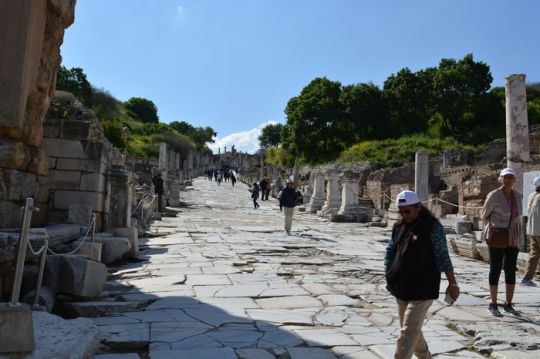
King Boris and Bulgaria's Alignment with Central European Powers
Turbulent Period Under King Boris
King Boris witnessed a series of premiers who faced overthrow or employed repressive measures against political rivals. Stambolisky, the head of the Agrarian Party, was the first such premier, making significant contributions to constructive economic policies like land reform. However, in 1923, a coup ousted the Stambolisky government, leading to his tragic murder.
Influence of Dr. Stoyadinovich in Yugoslavia
The ascent of Dr. Stoyadinovich, a pro-fascist leader in neighboring Yugoslavia, played a role in Bulgaria intensifying negotiations with Central European powers. Unable to seek assistance from the Soviet Union or neighboring countries, Bulgaria turned to Germany and Italy.
Strengthening Ties with Italy (1930)
In 1930, King Boris married Princess Giovanna, the daughter of the King of Italy, further cementing Bulgaria’s relations with Italy. The Balkan Conference of the same year aimed to prevent Bulgaria from reclaiming territory lost in the World War I peace treaty. The 1934 Balkan Pact, signed by Greece, Turkey, Yugoslavia, and Romania, pursued a similar goal City Tours Istanbul.
King Boris’s Absolute Rule (1935)
By 1935, King Boris established himself as an absolute sovereign, ruling without political parties and legal opposition. During his rule, trade with Germany progressively rose, reaching 67% of Bulgaria’s exports and 65% of its imports in 1939. These figures continued to climb during the war, as Bulgaria maintained ties with Germany in hopes of regaining lost territory. This hope materialized with the return of southern Dobrudja, forced back from Romania to Bulgaria.
0 notes
Photo

King Boris and Bulgaria's Alignment with Central European Powers
Turbulent Period Under King Boris
King Boris witnessed a series of premiers who faced overthrow or employed repressive measures against political rivals. Stambolisky, the head of the Agrarian Party, was the first such premier, making significant contributions to constructive economic policies like land reform. However, in 1923, a coup ousted the Stambolisky government, leading to his tragic murder.
Influence of Dr. Stoyadinovich in Yugoslavia
The ascent of Dr. Stoyadinovich, a pro-fascist leader in neighboring Yugoslavia, played a role in Bulgaria intensifying negotiations with Central European powers. Unable to seek assistance from the Soviet Union or neighboring countries, Bulgaria turned to Germany and Italy.
Strengthening Ties with Italy (1930)
In 1930, King Boris married Princess Giovanna, the daughter of the King of Italy, further cementing Bulgaria’s relations with Italy. The Balkan Conference of the same year aimed to prevent Bulgaria from reclaiming territory lost in the World War I peace treaty. The 1934 Balkan Pact, signed by Greece, Turkey, Yugoslavia, and Romania, pursued a similar goal City Tours Istanbul.
King Boris’s Absolute Rule (1935)
By 1935, King Boris established himself as an absolute sovereign, ruling without political parties and legal opposition. During his rule, trade with Germany progressively rose, reaching 67% of Bulgaria’s exports and 65% of its imports in 1939. These figures continued to climb during the war, as Bulgaria maintained ties with Germany in hopes of regaining lost territory. This hope materialized with the return of southern Dobrudja, forced back from Romania to Bulgaria.
0 notes
Photo
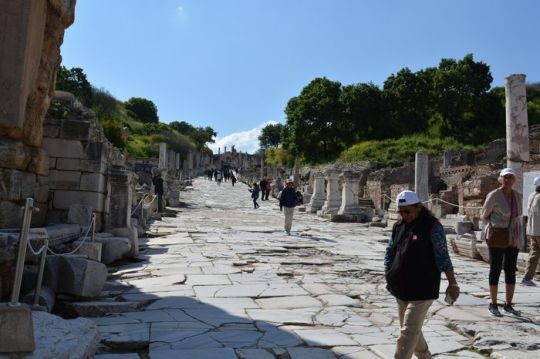
King Boris and Bulgaria's Alignment with Central European Powers
Turbulent Period Under King Boris
King Boris witnessed a series of premiers who faced overthrow or employed repressive measures against political rivals. Stambolisky, the head of the Agrarian Party, was the first such premier, making significant contributions to constructive economic policies like land reform. However, in 1923, a coup ousted the Stambolisky government, leading to his tragic murder.
Influence of Dr. Stoyadinovich in Yugoslavia
The ascent of Dr. Stoyadinovich, a pro-fascist leader in neighboring Yugoslavia, played a role in Bulgaria intensifying negotiations with Central European powers. Unable to seek assistance from the Soviet Union or neighboring countries, Bulgaria turned to Germany and Italy.
Strengthening Ties with Italy (1930)
In 1930, King Boris married Princess Giovanna, the daughter of the King of Italy, further cementing Bulgaria’s relations with Italy. The Balkan Conference of the same year aimed to prevent Bulgaria from reclaiming territory lost in the World War I peace treaty. The 1934 Balkan Pact, signed by Greece, Turkey, Yugoslavia, and Romania, pursued a similar goal City Tours Istanbul.
King Boris’s Absolute Rule (1935)
By 1935, King Boris established himself as an absolute sovereign, ruling without political parties and legal opposition. During his rule, trade with Germany progressively rose, reaching 67% of Bulgaria’s exports and 65% of its imports in 1939. These figures continued to climb during the war, as Bulgaria maintained ties with Germany in hopes of regaining lost territory. This hope materialized with the return of southern Dobrudja, forced back from Romania to Bulgaria.
0 notes
Photo

King Boris and Bulgaria's Alignment with Central European Powers
Turbulent Period Under King Boris
King Boris witnessed a series of premiers who faced overthrow or employed repressive measures against political rivals. Stambolisky, the head of the Agrarian Party, was the first such premier, making significant contributions to constructive economic policies like land reform. However, in 1923, a coup ousted the Stambolisky government, leading to his tragic murder.
Influence of Dr. Stoyadinovich in Yugoslavia
The ascent of Dr. Stoyadinovich, a pro-fascist leader in neighboring Yugoslavia, played a role in Bulgaria intensifying negotiations with Central European powers. Unable to seek assistance from the Soviet Union or neighboring countries, Bulgaria turned to Germany and Italy.
Strengthening Ties with Italy (1930)
In 1930, King Boris married Princess Giovanna, the daughter of the King of Italy, further cementing Bulgaria’s relations with Italy. The Balkan Conference of the same year aimed to prevent Bulgaria from reclaiming territory lost in the World War I peace treaty. The 1934 Balkan Pact, signed by Greece, Turkey, Yugoslavia, and Romania, pursued a similar goal City Tours Istanbul.
King Boris’s Absolute Rule (1935)
By 1935, King Boris established himself as an absolute sovereign, ruling without political parties and legal opposition. During his rule, trade with Germany progressively rose, reaching 67% of Bulgaria’s exports and 65% of its imports in 1939. These figures continued to climb during the war, as Bulgaria maintained ties with Germany in hopes of regaining lost territory. This hope materialized with the return of southern Dobrudja, forced back from Romania to Bulgaria.
0 notes
Photo

King Boris and Bulgaria's Alignment with Central European Powers
Turbulent Period Under King Boris
King Boris witnessed a series of premiers who faced overthrow or employed repressive measures against political rivals. Stambolisky, the head of the Agrarian Party, was the first such premier, making significant contributions to constructive economic policies like land reform. However, in 1923, a coup ousted the Stambolisky government, leading to his tragic murder.
Influence of Dr. Stoyadinovich in Yugoslavia
The ascent of Dr. Stoyadinovich, a pro-fascist leader in neighboring Yugoslavia, played a role in Bulgaria intensifying negotiations with Central European powers. Unable to seek assistance from the Soviet Union or neighboring countries, Bulgaria turned to Germany and Italy.
Strengthening Ties with Italy (1930)
In 1930, King Boris married Princess Giovanna, the daughter of the King of Italy, further cementing Bulgaria’s relations with Italy. The Balkan Conference of the same year aimed to prevent Bulgaria from reclaiming territory lost in the World War I peace treaty. The 1934 Balkan Pact, signed by Greece, Turkey, Yugoslavia, and Romania, pursued a similar goal City Tours Istanbul.
King Boris’s Absolute Rule (1935)
By 1935, King Boris established himself as an absolute sovereign, ruling without political parties and legal opposition. During his rule, trade with Germany progressively rose, reaching 67% of Bulgaria’s exports and 65% of its imports in 1939. These figures continued to climb during the war, as Bulgaria maintained ties with Germany in hopes of regaining lost territory. This hope materialized with the return of southern Dobrudja, forced back from Romania to Bulgaria.
0 notes
Photo

King Boris and Bulgaria's Alignment with Central European Powers
Turbulent Period Under King Boris
King Boris witnessed a series of premiers who faced overthrow or employed repressive measures against political rivals. Stambolisky, the head of the Agrarian Party, was the first such premier, making significant contributions to constructive economic policies like land reform. However, in 1923, a coup ousted the Stambolisky government, leading to his tragic murder.
Influence of Dr. Stoyadinovich in Yugoslavia
The ascent of Dr. Stoyadinovich, a pro-fascist leader in neighboring Yugoslavia, played a role in Bulgaria intensifying negotiations with Central European powers. Unable to seek assistance from the Soviet Union or neighboring countries, Bulgaria turned to Germany and Italy.
Strengthening Ties with Italy (1930)
In 1930, King Boris married Princess Giovanna, the daughter of the King of Italy, further cementing Bulgaria’s relations with Italy. The Balkan Conference of the same year aimed to prevent Bulgaria from reclaiming territory lost in the World War I peace treaty. The 1934 Balkan Pact, signed by Greece, Turkey, Yugoslavia, and Romania, pursued a similar goal City Tours Istanbul.
King Boris’s Absolute Rule (1935)
By 1935, King Boris established himself as an absolute sovereign, ruling without political parties and legal opposition. During his rule, trade with Germany progressively rose, reaching 67% of Bulgaria’s exports and 65% of its imports in 1939. These figures continued to climb during the war, as Bulgaria maintained ties with Germany in hopes of regaining lost territory. This hope materialized with the return of southern Dobrudja, forced back from Romania to Bulgaria.
0 notes
Photo

Dear friends , We are happy to announce that ”Socialist Modernism in Former Yugoslavia”, the third photo album/digital guide of @_BA_CU ‘s planned series, is available in 800 copies. The photo album includes landmarks of socialist modernist architecture in Former Yugoslavia – from the 1950s to 1980s. B.A.C.U. Association explains socialist modernist tendencies, it presents – in color photographs – a functional image of the buildings and their often original elements that synthesize local culture and traditions, while bringing you up to date with their current state of conservation. At the beginning of the book, a map shows the location of each of the buildings described. The 67 landmarks included in this volume have been organized by function, into six sections. The book contains the authors’ view on Former Yugoslav modernist architecture. Print run 800 Pages 192 +1 Spread/ YUGO-SOC MOD Map Croatian, Serbian and English Size 26×28.5 cm Weight 1.25 kg Designed and published by @_BA_CU Association Those who are interested in #SocialistModernism are able to order the book on 👉🏻 @fdestribute @fudeshopamazon 👈🏻distributor page, (Link in our profile) ; link: http://fdestribute.com/fdshop/ or AMAZON: https://www.amazon.com/s?me=A33QJE9SPOCVM4&marketplaceID=ATVPDKIKX0DER by selecting the Photo album from among the books listed. (DHL Express Shipping worldwide) #SocialistModernism #_BA_CU 2 pic Monument to the uprising of the people of Kordun and Banija / Spomenik ustanku naroda Banije i Korduna Petrovac, Petrova Gora, Croatia Unveiled in 1981 Artist Vojin Bakić - 3rd pic: The former Tuzla Bank, (Now NLB) Tuzla, BiH, Built in 1977, Architect V.Stojanović (c) BACU 1 pic: Valley of Heroes Monument 1971. Tjentište, Bosnia and Herzegovina Artists Miodrag Živković with Ranko Radovic © B.A.C.U. 5 & 7 pic: Hotel Zlatibor, Užice, Serbia Built in 1981 Architect Svetlana Kana Radević 9pic: Lamela Bildings -Block 61-64 (aka Panonian Sailboats), Belgrade, Serbia,1970s, 10pic: Western Gates of Belgrade, Belgrade, Serbia, built in 1977, Architect Mihajlo Mitrović. https://www.instagram.com/p/CNCXZZpsRN6/?igshid=NGJjMDIxMWI=
3 notes
·
View notes
Photo

Dear friends , We are happy to announce that ”Socialist Modernism in Former Yugoslavia”, the third photo album/digital guide of @_BA_CU ‘s planned series, is available in 800 copies. The photo album includes landmarks of socialist modernist architecture in Former Yugoslavia – from the 1950s to 1980s. B.A.C.U. Association explains socialist modernist tendencies, it presents – in color photographs – a functional image of the buildings and their often original elements that synthesize local culture and traditions, while bringing you up to date with their current state of conservation. At the beginning of the book, a map shows the location of each of the buildings described. The 67 landmarks included in this volume have been organized by function, into six sections. The book contains the authors’ view on Former Yugoslav modernist architecture. Print run 800 Pages 192 +1 Spread/ YUGO-SOC MOD Map Croatian, Serbian and English Size 26×28.5 cm Weight 1.25 kg Designed and published by @_BA_CU Association Those who are interested in #SocialistModernism are able to order the book on @UrbanicaGroup distributor page, (Link in our profile) ; link: http://urbanicagroup.ro/ushop/ or AMAZON: https://www.amazon.com/s?me=A33QJE9SPOCVM4&marketplaceID=ATVPDKIKX0DER by selecting the Photo album from among the books listed. (Shipping worldwide with DHL) #SocialistModernism #_BA_CU 1st to 7th pic: PTT Telecommunications Center Skopje, Republic of North Macedonia Built in 1972-74. Urban Planning by Kenzo Tange (1960s) Architect Janko Konstantinov (c) BACU https://www.instagram.com/p/CFrdHULlSw4/?igshid=NGJjMDIxMWI=
30 notes
·
View notes
Photo
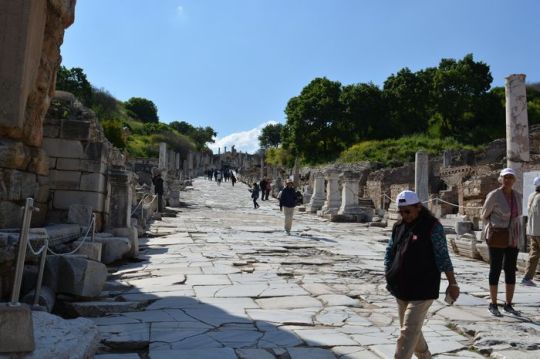
King Boris and Bulgaria's Alignment with Central European Powers
Turbulent Period Under King Boris
King Boris witnessed a series of premiers who faced overthrow or employed repressive measures against political rivals. Stambolisky, the head of the Agrarian Party, was the first such premier, making significant contributions to constructive economic policies like land reform. However, in 1923, a coup ousted the Stambolisky government, leading to his tragic murder.
Influence of Dr. Stoyadinovich in Yugoslavia
The ascent of Dr. Stoyadinovich, a pro-fascist leader in neighboring Yugoslavia, played a role in Bulgaria intensifying negotiations with Central European powers. Unable to seek assistance from the Soviet Union or neighboring countries, Bulgaria turned to Germany and Italy.
Strengthening Ties with Italy (1930)
In 1930, King Boris married Princess Giovanna, the daughter of the King of Italy, further cementing Bulgaria’s relations with Italy. The Balkan Conference of the same year aimed to prevent Bulgaria from reclaiming territory lost in the World War I peace treaty. The 1934 Balkan Pact, signed by Greece, Turkey, Yugoslavia, and Romania, pursued a similar goal City Tours Istanbul.
King Boris’s Absolute Rule (1935)
By 1935, King Boris established himself as an absolute sovereign, ruling without political parties and legal opposition. During his rule, trade with Germany progressively rose, reaching 67% of Bulgaria’s exports and 65% of its imports in 1939. These figures continued to climb during the war, as Bulgaria maintained ties with Germany in hopes of regaining lost territory. This hope materialized with the return of southern Dobrudja, forced back from Romania to Bulgaria.
0 notes
Photo
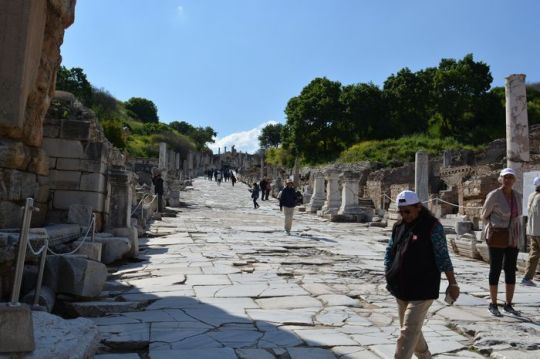
King Boris and Bulgaria's Alignment with Central European Powers
Turbulent Period Under King Boris
King Boris witnessed a series of premiers who faced overthrow or employed repressive measures against political rivals. Stambolisky, the head of the Agrarian Party, was the first such premier, making significant contributions to constructive economic policies like land reform. However, in 1923, a coup ousted the Stambolisky government, leading to his tragic murder.
Influence of Dr. Stoyadinovich in Yugoslavia
The ascent of Dr. Stoyadinovich, a pro-fascist leader in neighboring Yugoslavia, played a role in Bulgaria intensifying negotiations with Central European powers. Unable to seek assistance from the Soviet Union or neighboring countries, Bulgaria turned to Germany and Italy.
Strengthening Ties with Italy (1930)
In 1930, King Boris married Princess Giovanna, the daughter of the King of Italy, further cementing Bulgaria’s relations with Italy. The Balkan Conference of the same year aimed to prevent Bulgaria from reclaiming territory lost in the World War I peace treaty. The 1934 Balkan Pact, signed by Greece, Turkey, Yugoslavia, and Romania, pursued a similar goal City Tours Istanbul.
King Boris’s Absolute Rule (1935)
By 1935, King Boris established himself as an absolute sovereign, ruling without political parties and legal opposition. During his rule, trade with Germany progressively rose, reaching 67% of Bulgaria’s exports and 65% of its imports in 1939. These figures continued to climb during the war, as Bulgaria maintained ties with Germany in hopes of regaining lost territory. This hope materialized with the return of southern Dobrudja, forced back from Romania to Bulgaria.
0 notes
Photo

King Boris and Bulgaria's Alignment with Central European Powers
Turbulent Period Under King Boris
King Boris witnessed a series of premiers who faced overthrow or employed repressive measures against political rivals. Stambolisky, the head of the Agrarian Party, was the first such premier, making significant contributions to constructive economic policies like land reform. However, in 1923, a coup ousted the Stambolisky government, leading to his tragic murder.
Influence of Dr. Stoyadinovich in Yugoslavia
The ascent of Dr. Stoyadinovich, a pro-fascist leader in neighboring Yugoslavia, played a role in Bulgaria intensifying negotiations with Central European powers. Unable to seek assistance from the Soviet Union or neighboring countries, Bulgaria turned to Germany and Italy.
Strengthening Ties with Italy (1930)
In 1930, King Boris married Princess Giovanna, the daughter of the King of Italy, further cementing Bulgaria’s relations with Italy. The Balkan Conference of the same year aimed to prevent Bulgaria from reclaiming territory lost in the World War I peace treaty. The 1934 Balkan Pact, signed by Greece, Turkey, Yugoslavia, and Romania, pursued a similar goal City Tours Istanbul.
King Boris’s Absolute Rule (1935)
By 1935, King Boris established himself as an absolute sovereign, ruling without political parties and legal opposition. During his rule, trade with Germany progressively rose, reaching 67% of Bulgaria’s exports and 65% of its imports in 1939. These figures continued to climb during the war, as Bulgaria maintained ties with Germany in hopes of regaining lost territory. This hope materialized with the return of southern Dobrudja, forced back from Romania to Bulgaria.
0 notes